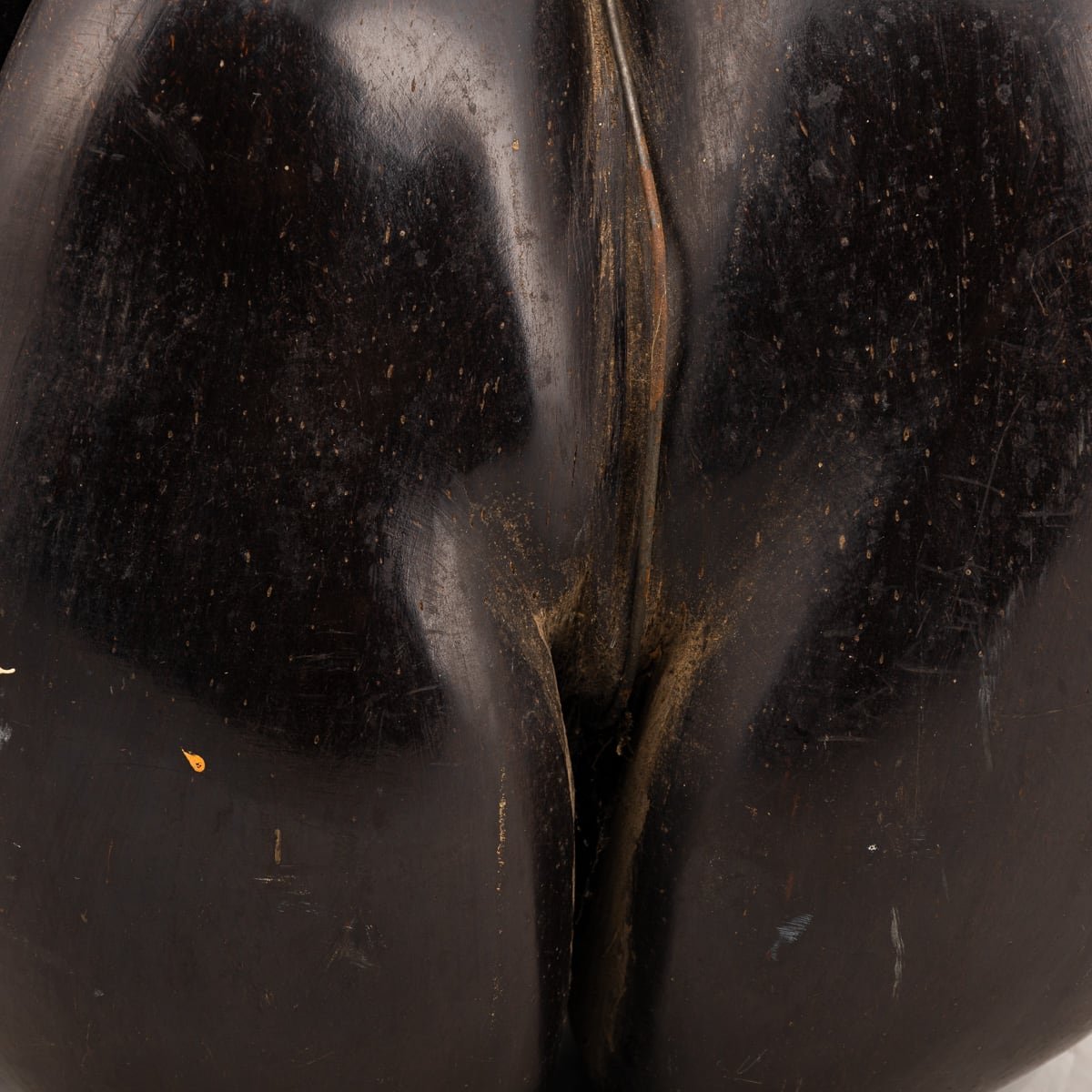ANTIQUE 20thC EXTREMELY RARE POLISHED TRIPLE COCO DE MER NUT, SEYCHELLES c.1900
This late Victorian Coco de Mer, or sea coconut, stands out as an extraordinary and highly unusual piece for any serious collector. Polished to a high gloss finish, it possesses an undeniable allure due to its rarity and distinctive form.
While most Coco de Mer specimens are found in two segments, what makes this particular piece so remarkable is its unique "mutant" structure featuring three segments. This rare anomaly sets it apart from the typical examples and adds to its extraordinary value.
Reference Number: B10878
This late Victorian Coco de Mer, or sea coconut, stands out as an extraordinary and highly unusual piece for any serious collector. Polished to a high gloss finish, it possesses an undeniable allure due to its rarity and distinctive form.
While most Coco de Mer specimens are found in two segments, what makes this particular piece so remarkable is its unique "mutant" structure featuring three segments. This rare anomaly sets it apart from the typical examples and adds to its extraordinary value.
Reference Number: B10878
This late Victorian Coco de Mer, or sea coconut, stands out as an extraordinary and highly unusual piece for any serious collector. Polished to a high gloss finish, it possesses an undeniable allure due to its rarity and distinctive form.
While most Coco de Mer specimens are found in two segments, what makes this particular piece so remarkable is its unique "mutant" structure featuring three segments. This rare anomaly sets it apart from the typical examples and adds to its extraordinary value.
Reference Number: B10878
ADDITIONAL INFORMATION
It is not uncommon to find just one half of a Coco de Mer, whereas it is extremely rare to come across a complete specimen with both halves intact. However, finding one with three segments is virtually unheard of, making this piece quite possibly the only one of its kind in existence. Its rarity and striking appearance make it a coveted and fascinating item for any collector of unique natural curiosities.
Formerly known as Maldive coconut, its scientific name, Lodoicea maldivica, originated before the 18th century when the Seychelles were uninhabited. In centuries past the coconuts that fell from the trees and ended up in the sea would be carried away eastwards by the prevailing sea currents. The nuts can only float after the germination process, when they are hollow. In this way many drifted to the Maldives where they were gathered from the beaches and valued as an important trade and medicinal item. This association is reflected in one of the plant's archaic botanical names, Lodoicea callipyge in which callipyge is from Greek words meaning 'beautiful buttocks'.
Until the true source of the nut was discovered in 1768 by Dufresne, it was believed by many to grow on a mythical tree at the bottom of the sea. European nobles in the sixteenth century would often have the shells of these nuts polished and decorated with valuable jewels as collectibles for their private galleries. The coco de mer tree is now a rare and protected species.
CONDITION
The three nuts are held together by a very old steel wire which has probably been with the item for its entire lifetime. Some scrapes around the nut as it was being used as a door stop (!) by the original owner who had it in their family for as long as they could remember. Very good condition overall, please refer to photographs
SIZE
Height: 29 cm // 11.42 inches
Width: 35 cm // 13.78 inches
Depth: 34 cm // 13.39 inches


















